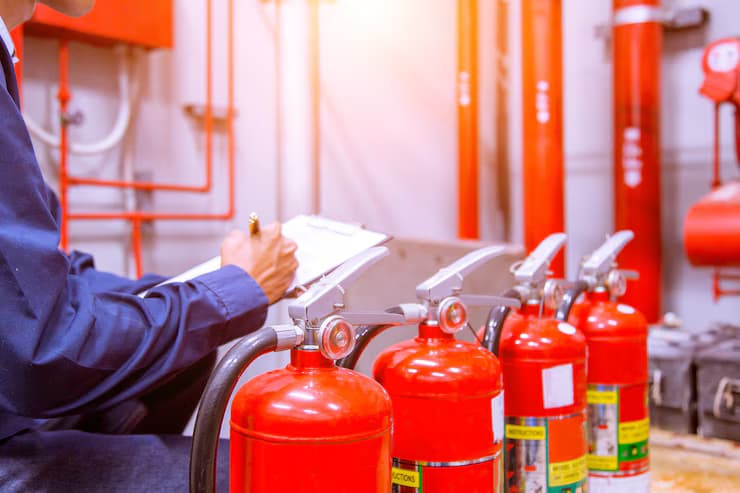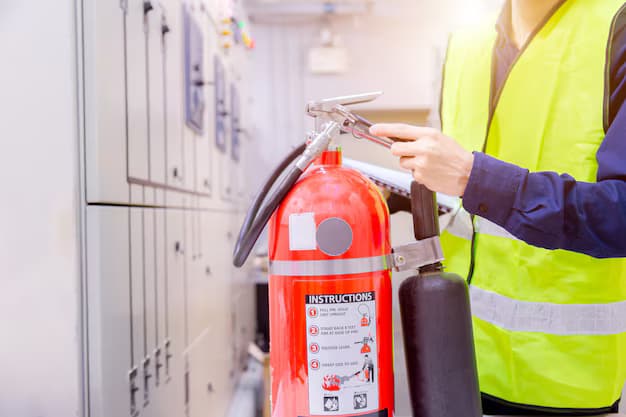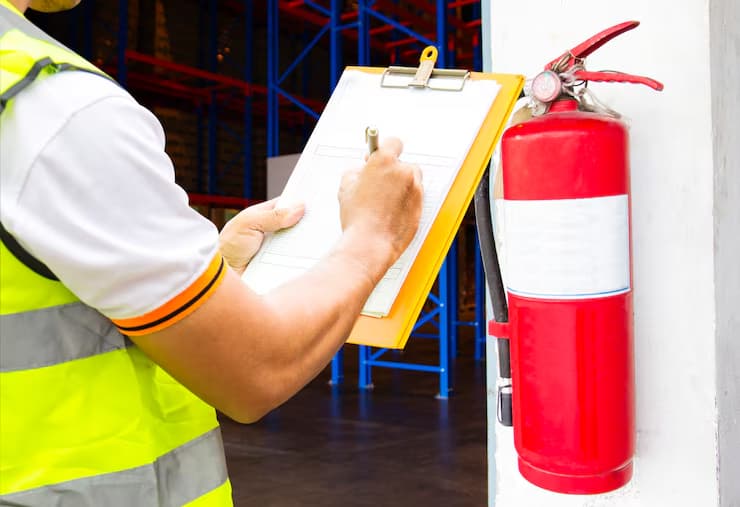How to Prepare Your Property for a Fire Inspection

Strong 8k brings an ultra-HD IPTV experience to your living room and your pocket.
Preparing your property for a fire inspection is not only a legal obligation but also a critical component of ensuring the safety of your premises and the individuals who inhabit it. The process might seem daunting at first, especially for businesses that have never undergone an inspection or for those who haven’t reviewed their fire safety measures in a while. However, with systematic planning and a keen eye for detail, you can navigate this task effectively. This article will guide you through the essential steps to prepare your property for a fire inspection, highlighting the key areas you need to address to ensure compliance and safety.
Understanding the Importance of Fire Inspections
Fire inspections serve as a proactive measure to identify potential hazards that could lead to fire outbreaks. These inspections are conducted by certified professionals who evaluate various aspects of your property, including fire detection systems, emergency exits, and overall fire safety protocols. The ultimate goal is to minimize the risk of fire and ensure that, in the event of an emergency, the property and its occupants are adequately protected.
To truly grasp the importance of fire inspections, consider the statistics. The National Fire Protection Association (NFPA) reports that in the United States alone, there are over 350,000 residential fires each year. Many of these incidents could have been prevented with proper fire safety measures and regular inspections. Therefore, preparing your property for a fire inspection not only fulfills legal requirements but also contributes to the overall safety and well-being of everyone involved.
Assessing Your Fire Safety Equipment
Before the fire inspector arrives, it is crucial to take a comprehensive inventory of your fire safety equipment. This includes smoke detectors, fire alarms, sprinkler systems, fire extinguishers, and emergency lighting. Begin by ensuring that all these devices are functional, properly placed, and compliant with relevant local codes.
Start with smoke detectors and alarms: check the batteries and ensure they are in good working order. If these devices are hardwired, ensure that there are no visible signs of damage or corrosion. Fire extinguishers should be easily accessible, inspected regularly, and tagged to show the last inspection date. The NFPA recommends that fire extinguishers be inspected at least once a year.
Next, examine your sprinkler systems. These should be free of obstructions, with no furniture or decorations blocking the sprinkler heads. Regular maintenance is also critical; verify that the system has been serviced within the last year. Additionally, ensure that emergency lighting is operational and illuminates all exit paths clearly. This preparation will not only help you pass the fire inspection but also enhance the safety of your property significantly.
Maintaining Clear Exits and Escape Routes
One of the most vital aspects of fire safety is ensuring that all exits and escape routes are clearly marked and easily accessible. During a fire inspection, inspectors will look for unobstructed paths to exits and emergency exits. This means that any furniture, equipment, or decorations that block these pathways should be removed immediately.
Take a moment to walk through your property as though you were an inspector. Ensure that all exit signs are illuminated and visible, and that emergency exits are unlocked and easy to open. It is essential to have clear signage indicating the location of the nearest exits, and if you operate a larger facility, consider having a fire evacuation plan posted in common areas.
Moreover, conducting regular fire drills is an excellent way to familiarize your staff and occupants with escape routes. This practice not only prepares everyone for a real emergency but also showcases your commitment to fire safety, which can positively influence the inspector’s assessment.
Training Employees and Occupants on Fire Safety
An often-overlooked aspect of fire safety is ensuring that everyone on your property is well-informed about fire safety protocols. Employees and occupants should receive training on how to respond in case of a fire, including how to use fire extinguishers, how to evacuate safely, and how to alert emergency services.
Investing time in fire safety training sessions can be invaluable. Consider organizing periodic workshops or inviting a fire safety expert to educate your staff on the importance of fire safety measures. This training can cover various topics, from recognizing potential fire hazards to understanding the operation of fire safety equipment.
Additionally, maintaining open communication about fire safety practices is crucial. Encourage employees to report any potential hazards they observe, such as malfunctioning smoke detectors or blocked exits. By fostering a culture of safety, you not only prepare for a fire inspection but also instill a sense of responsibility among everyone involved.
Reviewing Fire Safety Policies and Procedures
Every property should have a well-documented fire safety policy outlining procedures for preventing and responding to fire emergencies. This document should include details about fire drills, maintenance schedules for fire safety equipment, and protocols for reporting hazards.
Before the inspection, take the time to review this policy and ensure that it aligns with current regulations and best practices. Make necessary updates to reflect any changes in your property or operations. If your business has expanded or altered its layout, for example, you may need to update your fire safety plan accordingly.
Incorporating feedback from previous inspections can also be beneficial. If your property has undergone inspections in the past, carefully review the inspector’s remarks and address any recurring issues. This proactive approach demonstrates your commitment to fire safety and can lead to a more favorable inspection outcome.
Final Preparations Before the Inspection
As the fire inspection day approaches, it’s essential to conduct a final walkthrough of your property. This last-minute evaluation allows you to identify any last-minute adjustments needed to ensure full compliance. Check all exit signs, review the functionality of fire safety equipment, and ensure that all fire safety policies are readily available for the inspector to review.
It is also advisable to have your documentation organized and accessible. This includes maintenance logs for fire safety equipment, training records for staff, and any other relevant documentation that can support your compliance efforts. Being well-prepared not only facilitates a smoother inspection process but also reflects your commitment to safety and responsibility.
Conclusion
Preparing your property for a fire inspection is a critical task that requires meticulous attention to detail and a proactive mindset. By understanding the importance of fire inspections, assessing your fire safety equipment, maintaining clear exits, training employees, reviewing fire policies, and conducting final preparations, you can ensure a successful inspection outcome.
At TBL Fire Protection, we specialize in providing comprehensive fire safety solutions tailored to your needs. If you are looking for expert guidance or fire protection services, reach out to us today! Let us help you create a safer environment for everyone on your property.
Note: IndiBlogHub features both user-submitted and editorial content. We do not verify third-party contributions. Read our Disclaimer and Privacy Policyfor details.




